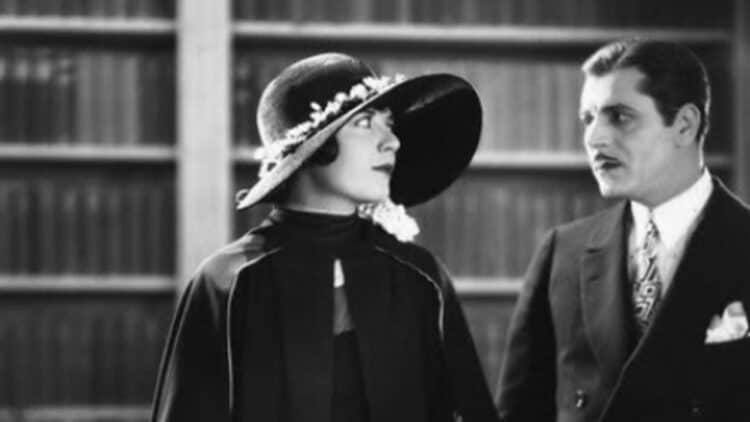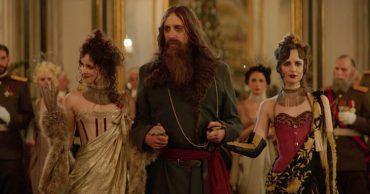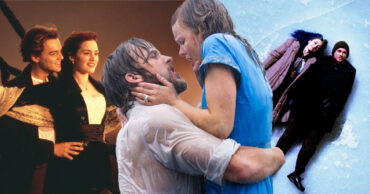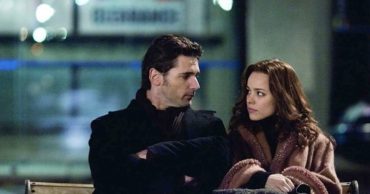
1926 was quite the year and if you thought that the 1920s were slow or boring in any way, you only need to take a look at these three momentous events that took place during the year. One, it was the year the first liquid-fueled was launched. Two, the first airship flew over the North Pole. And three, George Bernard Shaw famously refuses the money that came along with his Nobel Prize. But all that went down in history wasn’t the only thing that made 1926 a momentous year, the films that hit theaters and entertained audiences made the year a memorable one too. And in our list of What A Night Out At The Movies In 1926 Would Have in Store For You we bring to you some of the best movies that would have made a night out at the movies in 1926 an entertaining affair indeed!
A Page of Madness
Some may label A Page of Madness to be a movie beyond its time but we think that even as early as 1926, everyone in the film industry, especially the filmmakers of the time, was quite clear on how they would project their brilliance onto the screen through stories that were indeed different. Directed by Teinosuke Kinugasa, this movie was a Japanese silent film that brings to the audience the happenings in an asylum that is situated in the countryside. Taking the audience on a delusional trip that traverses between fantasy and reality, and sometimes offers a mix of both, the cast comprising of Masao Inoue, Ayako Iijima, Yoshie Nakagawa, Hiroshi Nemoto, and others come together to show just how easy it is to tell even the most complicated of stories if you commit to it. One of the many gems of the silent era, it was indeed a stroke of luck that after assuming that the film was completely lost, the director stumbled upon it in his storehouse, bringing to the world A Page of Madness yet again. If it was filmmaking brilliance you sought in an era where language meant little, this one would have proved to be the perfect fare for you.
The Great Gatsby
The Great Gatsby has a storyline that has often been visited and revisited by filmmakers, and one such attempt was made in 1926 too, by the director Herbert Brenon who was also well-known as an actor and screenwriter at the time. Based on the evergreen novel by F. Scott Fitzgerald, the film had a star cast consisting of Warner Baxter, Lois Wilson, Neil Hamilton, Georgia Hale, and William Powell leading the way. Sadly, this was one of the movies that seem to have been lost forever. In an era where the film prints were the only way to preserve movies, there were few who had the foresight to take care of these prints until newer technologies arrived to help preserve them better. And while many important films were lost this way, The Great Gatsby happens to be one among them. Today, the only memory of the film we are left with is the trailer. Even back then, the film was considered to be quite controversial, with Fitzgerald and his wife Zelda even walking out of a screening midway! In Zelda’s own words she wrote in a letter, “We saw The Great Gatsby at the movies. It’s rotten and awful and terrible and we left.” Well, even so, we sure hope we are able to find the prints of the movie someday!
Faust
Directed by Friedrich Wilhelm Murnau, Faust tells the story many of us may have heard of with a mix of the traditional version and the Goethe version that came to be revealed in 1808. A great example of the German Expressionist era, and one of the most renowned works from the time, the film revolves around the story of how a demon lays a bet with an archangel that if he is able to corrupt the soul of a man who is otherwise known to be straight as an arrow and a good person, the devil should be allowed to take over the earth and all of humanity. Thus begins an evil quest to lay waste to an otherwise good man but all is well in the end as love seems to win every battle, even the one against evil. Unfortunately, the audience of the time rejected Faust as a far cry from the original they were acquainted with and the film sank at the box office. However, as time went by, the brilliance of the film began unfolding and today, the movie is not only considered one of the pioneering works in German Expressionism but is also considered one of the greatest films of all time! Well, time sure changes the way we look at things, so do not fret if you chose this film for a night out at the movies in 1926 and walked out disappointed. You were not the only one!
Don Juan
The story of Don Juan is well-known and in 1926, a team consisting of Alan Crosland as director, and Walter Anthony, Maude Fulton, and Victor Vance as writers, decided on a retelling of the romantic and adventurous saga originally written by Lord Byron. With John Barrymore taking the lead, the film followed the usual plot of Don Juan taking to heart the dying imploration of his father Don Jose to only take from women and give them nothing in return. However, as we all know, love triumphs all indeed, and Don Juan not only changes his ways as love melts his heart but is even successful in winning over the love of his beloved Adriana. In addition to a popular storyline, the film was also well-known as the first one to adopt Vitaphone’s new sound-on-disc sound technology, allowing the audience to experience an in-sync musical score and even sound effects, quite a dramatic step forward in the silent era! Oh, and there’s one other detail that is associated with the film and makes it a record-holder even today — this one has John Barrymore as Don Juan kissing his lady loves Mary Astor and Estelle Taylor a total of 127 times throughout the film!
The General
No conversation about movies or just about anything to do with movies back from the 1920s is complete without the mention of Buster Keaton and his many adventures in filmmaking, and so it was in the year 1926 too, with another one of Buster’s works hitting theaters and taking audiences on a wild ride — The General. With Marion Mack adding to the star power of the film, this one has Buster playing the role of Johnnie Gray, a young man in love with Annabelle Lee, who declares that she will never speak to Johnnie again until she sees him in uniform. All this, due to a misunderstanding that Johnnie was shying away from enlisting, when all along, he was walking away only because he was already rejected citing that he would be of more help to the country as an engineer. A challenging film to make, and one that cost the studios a whopping amount of money, mainly due to accidents and lawsuits and making up for damages to crops, The film also had Buster indulging in many dangerous sequences, and the one that has him playing one of the most dangerous stunts on the train could have even gotten him killed or severely injured. Unfortunately, all that hard work was not really paid back as audiences did not take to the film very kindly, with some critics even labeling it one of Buster’s least popular comedic ventures. However, as time went by, the hard work behind the film as well as its intricacies came to be recognized more clearly, and today, The General is considered one of the classics from the silent era.
The Scarlet Letter
Inspired by Nathaniel Hawthorne’s 1850 novel by the same name, The Scarlet Letter was directed by Victor Seastrom, also a screenwriter and actor who held his sway over Swedish cinema with his brilliant works before moving to Hollywood, and over the years has come to be recognized as one of the drama films from the silent era that has indeed been made with a lot of passion. Today, while the film finds a place among honored lists such as AFI’s 100 Years… 100 Passions and AFI’s 100 Years… 100 Heroes & Villains, it also brings to us an era where even the most subtle of emotions and passions were captured on screen, even without sound to magnify it. In film critic Paul Malcolm’s words, “Seastrom seizes on Gish’s sensuality throughout the film… bringing this largely faithful adaptation down squarely on the side of love and ardent sensuality.” With Lillian Gish and Lars Hanson in the lead roles, The Scarlet Letter is a very close adaptation of the novel written by Hawthorne and can rarely be told apart from the plot of the novel.
Mother
A Soviet drama film that faced bans and revivals in several countries, Mother is based on the Russian Revolution and how a mother and wife is radicalized and plays her part in the battles of her time after the killing of her husband and imprisonment of her son. The film was the first of the trilogy from Vsevolod Pudovkin, with the other two films of the series — The End of St. Petersburg and Storm Over Asia, also known as The Heir to Genghis Khan — released subsequently in 1927 and 1928. The film tells us of a poignant tale where a wife first has to bear the news of the death of her husband and then, even has to go through the heartbreak of seeing her own son shot dead in her arms. A deeply disturbing yet touching tale, Mother is one of those films that takes us back in time and reveals just how heartbreaking times can be for those who are part of a revolution or any historical shift in society. It is often the poor who are trampled beneath the egos of those who wish for power, and Mother shows us just that.
The Fire Brigade
Charles Ray and May McAvoy lead the way in yet another silent era film that showcases the brilliance of the silent era, not only portraying vivid characters but also bringing to life storylines that are different from the usual. Directed by William Nigh and Robert N. Lee and Lotta Woods serving as writers to bring to the screen a story by Kate Corbaley, the film has a young man Terry O’Neil, among the youngest of a group of firefighters, courting a beautiful Helen Corwin. What sets apart this relationship, however, is that the heroine’s father is a crooked politician whose corrupt ways when it comes to signing off on building contracts result in several blazes in buildings that cause loss of life and property. Paying back to society, and in line with the film’s premise of telling the story of a firefighting unit, the producers of The Fire Brigade gave away 25 percent of the earnings of the film to a college that undertook the task of instructing new fire-fighting officers.
By the Law
Inspired by the short stories from Jack London titled The Unexpected and Just Meat from around a decade ago, By the Law was a 1926 silent drama film directed by Lev Kuleshov and led by a cast consisting of Aleksandra Khokhlova, Sergey Komarov, and Vladimir Fogel. It tells of a story of greed and anger, then followed by the all-important question of who should render justice to those who do wrong — the ones who have been wronged or have stood witness to it, or the law? The shooting of the film was carried out under extremely challenging weather conditions and often, the crew was working in knee-deep waters, extremely cold weather, and even had actors facing the danger of electric shocks due to poorly insulated electric wires. The story covers the plot of a group of gold miners and shows how a husband and wife are left to decide whether they should kill one of their group members who shot dead two others or wait for the snow to thaw and then hand over the murderer to law enforcement. Although a Soviet film, the plot is based on the gold found in Yukon during the times of the Klondike Gold Rush.
For Heaven’s Sake
Walking alongside the likes of Buster Keaton and Charlie Chaplin who adopted the filmmaking style of bringing to audiences plots revolving around comedy, Harold Lloyd was yet another entertaining leading man of the silent era. And one of his films that proved to be quite a hit at the box office in 1926 was For Heaven’s Sake. Directed by Sam Taylor, with Harold producing and leading the film as the main man, this one had the beautiful Jobyna Ralston playing the role of the leading lady and Harold’s love interest. Playing the role of a millionaire, this one has Harold donning the role of The Uptown Boy who is smitten with The Downtown Girl played by Jobyna and goes on his usual lineup of misadventures that were a standard expectation when it came to Harold Lloyd films. Of course, this one fared better than most others and in addition to being one of the most successful films of Harold’s career. was also the 12th highest-grossing one of the silent era, raking in a cool $2.6 million!
That’s What A Night Out At The Movies In 1926 Would Have in Store For You!
With laughter and romance, and tragedy and heartbreak, the mix of films we’ve brought to you here is indeed a great toast to the year that was 1926. And if you had to pick any of these films for a night out at the movies in 1926, you wouldn’t have been disappointed. Of course, some of these films have aged liked fine wine and are far more successful than they were at the time but nevertheless, this list indeed does try to do justice to the immense talent and brilliance of the time.
 Follow Us
Follow Us





